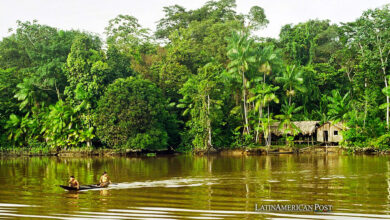What Is Environmental Racism? The Case Of Austin, Texas
Last Thursday, Tesla celebrated the opening of its gigafactory in Austin, Texas, but while its CEO, Elon Musk, promises a greener plant, Latino and black communities are exposed to the environmental consequences that this will bring.

Photo: Unsplash
LatinAmerican Post | Vanesa López Romero
Listen to this article
Leer en español: ¿Qué es el racismo ambiental?: Lo que refleja el caso de Austin, Texas
Elon Musk has been in charge of selling Tesla as a conscious company that makes electric cars and, in that vein, promotes a more environmentally friendly lifestyle while providing a more promising future. Under this speech, last Thursday, April 7, the new Tesla gigafactory was opened in Austin, Texas. According to Musk, this is revolutionary at an environmental level because the cars will now be made in the place where the buyers live, saving both economic and energy costs and reducing the emissions involved in transporting parts and cars. Although broadly this sounds very good, the reality is different.
What is happening in Austin with Tesla?
The Tesla factory is located just 120 meters from Austin's Colony community, which is made up of mostly black and Spanish-speaking people. This is a low-income community that for decades has been exposed to a lack of access to water and poor social services. But Austin's Colony has not only been relegated socially but also geographically since it is isolated from the city and is located where the industrial factories are, factories that were built precisely isolated from the city to grow without a problem and protect citizens.
However, Latinos and African Americans are apparently not among those citizens whom it seeks to protect. According to the environmental justice civil organization Poder Austin, today residents are exposed to constant noise, clogged roads, and contamination of their water sources. The Tesla factory seems to predict that these problems are only going to increase. But, as if this were not enough, the factory does obtain clean public water, while the community must make do with dirty private water.
Also read: Electric mobility: how is the panorama in Latin America?
This reality reflects a social and environmental paradox. While a company claims to be the future of renewable electrical energy, a community of underprivileged, historically relegated and migrant people face first-hand environmental problems, the diseases that this will surely bring as a consequence and to be once again outraged by not belonging to a white community that does have rights to be located far from industrial zones.
As if that were not enough, Poder Austin also claims that the gigafactory is very close to the Colorado River, which is possibly affected by the waste generated by the factory's production.
But what is environmental racism?
This is not the first, nor the last time that we see a case like this. For approximately 5 years now, the concept of environmental racism has been developing in the United States, which seeks to recognize the place that racialized people have had in the environmental crisis that we have been experiencing since the end of the last century. A study conducted by sociologist Liam Downey and published in the National Library of Medicine analyzes the spatial distribution of environmentally hazardous facilities and shows that these are concentrated or close to black, migrant (usually Latino), and poor communities. This is how he realizes a systematization of racism.
And while that is what we can see in the United States, it is very common around the world. Developing countries are the dumping ground for developed countries. It is in the south or in the poorest places where we find the factories that not only pollute the rivers of vulnerable communities every day, but also use these communities as a labor force for miserable wages. Pollution has resulted in newborns with malformations, adults with cancer due to exposure to chemicals used in production, and thousands of poor people in places without guarantees.
What is happening today in Austin is just one more example of what happened decades ago throughout the world, of systematized racism and environmental injustice that also generates social injustice.



